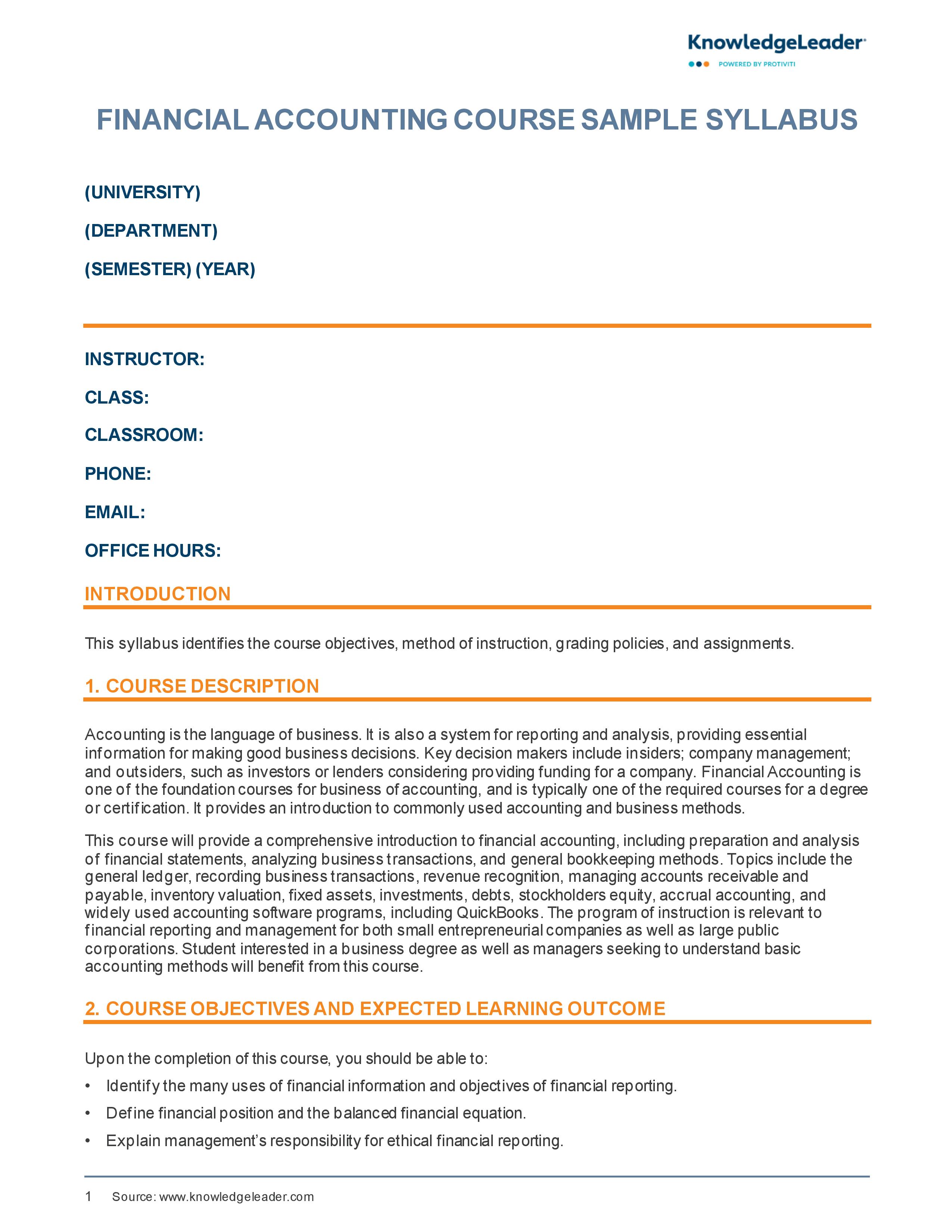Financial Accounting Sample Syllabus

Course Description
Accounting is the language of business. It is also a system for reporting and analysis, providing essential information for making good business decisions. Key decision makers include insiders; company management; and outsiders, such as investors or lenders considering providing funding for a company. Financial Accounting is one of the foundation courses for business of accounting, and is typically one of the required courses for a degree or certification. It provides an introduction to commonly used accounting and business methods.
This course will provide a comprehensive introduction to financial accounting, including preparation and analysis of financial statements, analyzing business transactions, and general bookkeeping methods. Topics include the general ledger, recording business transactions, revenue recognition, managing accounts receivable and payable, inventory valuation, fixed assets, investments, debts, stockholders equity, accrual accounting, and widely used accounting software programs, including QuickBooks. The program of instruction is relevant to financial reporting and management for both small entrepreneurial companies as well as large public corporations. Student interested in a business degree as well as managers seeking to understand basic accounting methods will benefit from this course.
Student Learning Objectives/Outcomes:
- Identify the many uses of financial information and objectives of financial reporting.
- Define financial position and the balanced financial equation.
- Explain management’s responsibility for ethical financial reporting.
- Prepare the four financial statements; income statement, balance sheet, statement of stockholders equity, and statement of cash flow.
- Analyze and record business transactions.
- Perform accrual entries.
- Prepare a trial balance
- Understand issues related to inventory management
- Define internal controls and identify the components of effective control procedures.
- Apply perpetual and periodic inventory valuation methods.
- Compute cost of goods sold and inventory values using average cost, specific identification, FIFO, and LIFO.
- Understand the management issues relating to accounts receivable and credit policies.
- Calculate allowance for uncollectible accounts.
- Account for short-term investments, including interest earned.
- Understand the management issues related to short-term liabilities.
- Account for contingent liabilities.
- Perform payroll accounting calculations.
- Reconcile a bank statement.
- Distinguish between and perform accounting transactions for capital and maintenance expenditures.
- Identify the different types of long-term assets.
- Perform calculations of depreciation using straight-line, unit of production, and double-declining balance.
- Perform accounting calculations for disposal and exchanges of long-term assets.
- Understand the management issues related to long-term debt.
- Perform the accounting for issuance, retirement, and interest expense for debt and bonds.
- Use present values to apply the time value of money and calculate bond values.
- Define and distinguish between mortgage bonds, notes payable, leases and convertible bonds.
- Understand the management issues relating to equity.
- Identify the different forms of business organization, sole proprietor, partnership, and corporation.
- Perform accounting for treasury stock.
- Calculate book value per share of stock.
- Understand the factors affecting quality of earnings.
- Understand non-operating issues, extraordinary items, and discontinued operations.
- Account for taxes and deferred taxes.
- Report the typical elements of an annual report for a public company.